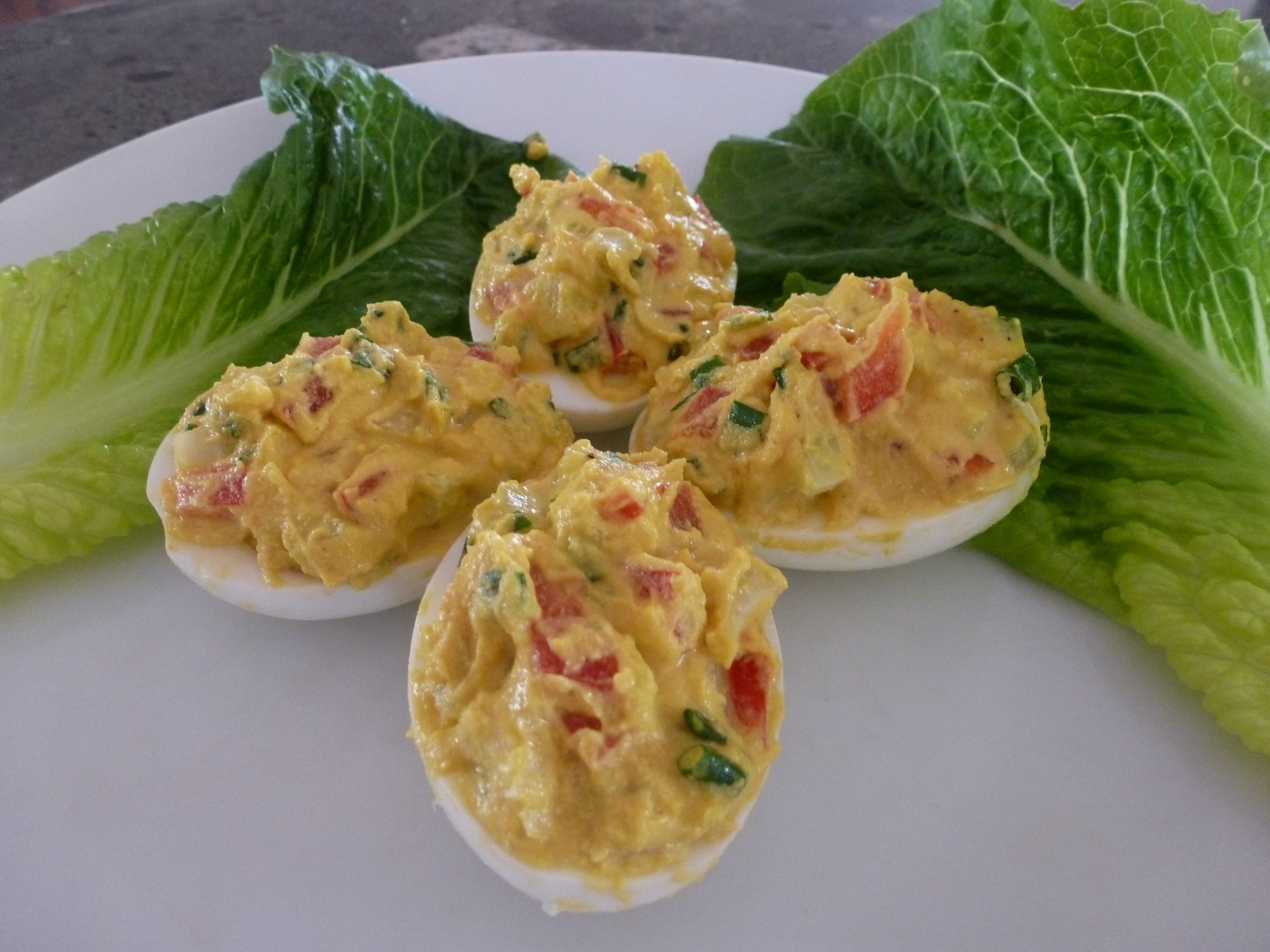Did you know that deviled eggs can be delicious when made without mayo? Give these a try and let me know what you think.
6 hard boiled eggs from pasture-raised hens (Cover with water in a pan, bring to a boil, turn off heat and cover pan, wait 10 minutes and then rinse with cold water.)
¼ cup extra-virgin olive oil
1 tsp. balsamic vinegar
2 tsp. prepared mustard
½ tsp sea salt or to taste
black pepper to taste
½ cup finely chopped celery
1 Tbsp. finely chopped red onion or 1/4 cup chopped fresh chives
½ cup finely chopped sweet red pepper (optional)
2 Tbsp. cultured vegetables or finely chopped dill pickle
paprika, optional
Remove the egg shells, rinse eggs, cut in half lengthwise and place on a plate. Remove yolks (they usually pop out when you bend the white a little or you can use a spoon ) and place in a food processor. Add olive oil, mustard, vinegar, sea salt and black pepper. Process until thoroughly mixed.
Transfer mixture to a bowl and add celery, red pepper, and cultured vegetables or pickle. Mix well. Taste and add more salt and black pepper if desired. Spoon a Tbsp. or more of the mixture onto each egg white half. Sprinkle with paprika if desired.


